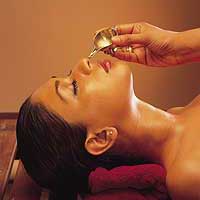Table of Contents
Ahara (Food)
Ahara is the food which is ingested, it includes all foods like eatables, lickables, drinkables etc. It is derived from root
पु आङ + ह + धञ्
Food has been given the prime importance since Vedic period. It is considered as Brahma in Upanisad. Kasyapa gives it the name Mahabhaisajya. This is responsible for the growth, development and enhancement of ojas.
Food is supreme or brahma. All the beings originate from food, food is responsible for life of all beings. Anna is present in all living beings in the form of food sheath Annamayakosa.
Charaka emphasises importance of Food. The body as well as disease are formed by food, wholesome and unwholesome food are responsible for happiness and misery respectively.
- Anna or food is the best among things which sustain life.
- The disease can be cured without any medication by just following wholesome regimen. Where as even hundreds of medicines cannot cure a disease in absence of wholesome regimen.
- No medicine is equivalent to food. It is possible to make a person disease free with just proper diet.
- The food enhances vitality, strength & makes the body sturdy. Food increases enthusiasm, memory, agni, life span, lusture & okas.
- Consumption of pure food ie satvika ahara makes the mind clear. When mind is devoid of blemishes memory power enhances.
- Health is dependent on food.
´Benefits of Food
Food helps in sustenance of the life of living beings. All living beings in the world require food. Complexion, clarity, god voice, longevity, intelligence, happiness, satisfaction, nourishment, strength & intellect are all present in food. Professional activities leading to happiness in this world, Vedic procedure leading to heaven and observance of truth, abstinence leading to liberation are all dependent on food.
Most of the incurable diseases are produced due to improper food. So intelligent & self controlled man should consume conducive food in right quantity, at the right time to prevent diseases.
Time For Taking Food
According to the classics man should take food twice daily in the morning and evening. Consumption of food in between is contraindicated like Agnihotri.
After Evacuation of bowels, when senses are clear, body is light, clear belching, heart is devoid of blemishes, vayu is normal, interest for intake of food is present, emptiness in stomach & hunger flares up, one should consume food.
After the digestion of rasa, dosa & mala, one should consume food without giving consideration to time Proper belching, clearity, enthusiasm, proper evacuation of urges, lightness in the body, hunger and thirst are the features of proper digestion.
The Pachakagni digests food, in absence of food it digests dosas, in absence of dosas it digests dhatus and ultimately in absence of dhatus it digests prana, as it takes away the life. So if one feels extremely hungry he should consume food irrespective of time.
Even though doctors contraindicate food at midnight, if one feels extremely hungry, he should take food even at midnight. Because hunger is one of the non suppressible urges.
One should not take food with in three hours (1 Yama) of consumption of food as it leads to Rasodvega & one should not fast more than six hours (ie 2 Yama) as it leads to loss of strength.
In seasons where the nights are lengthy, one should consume food in the morning only, seasons where days are lengthy one should consume food indicated in the first prahara at night and in afternoon itself. Seasons where day & nights are of same length food should be taken at indicated time.
One should not consume food after the prescribed time or food should not be consumed in less or more quantity. Consumption of food before feeling of lightness produces mandagani, indigestion or even death.
If one consumes food after long gap, Jataragni gets destroyed by the aggravated vata, producing difficulty to digest the foot taken. Even though the food consumed in the morning is not digested properly, the food consumed in the evening does not get vitiated.
In the day time, as lotus blooms by the appearance of sun, in the same way all channels open up. As the rasadi dhatu are not moistened due to excessive work, thinking, and activeness in mind in the day time, the food in dry dhatus does not get vitiated as milk mixed with another milk does not get vitiated, instead gets mixed well.
At night heart is closed & channels are also closed, all dhatus are wet. As the cold milk mixed with hot milk gets vitiated, the Aklinna food gets more vitiated by the morning food. One desirous of strength & longevity should consume food in the morning, only when food taken at night is digested properly.
So only charaka gives highest importance for intake of food at proper time for maintenance of positive health.
In take of wholesome & unwholesome food together is called samasana. In take of less or more food at irregular time is called visamasana. In take of food before digestion of food consumed earlier is called Adhyasana. All the three produce death or dreadful diseases.
The digestive fire is not enhanced by the fasting nor by the intake of excessive food as absence of fuel extinguishes the existent fire or excess of fuel extinguishes mild fire.









